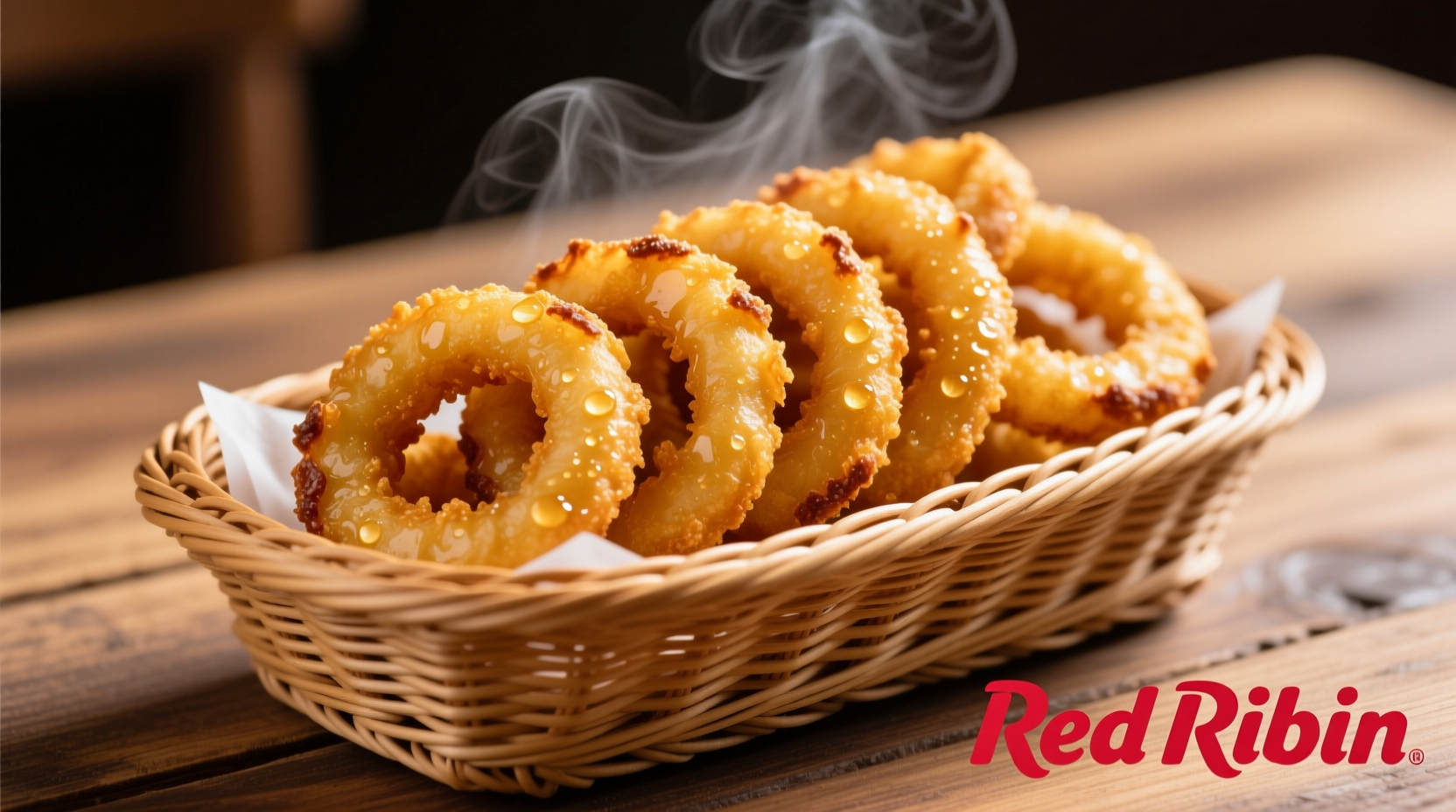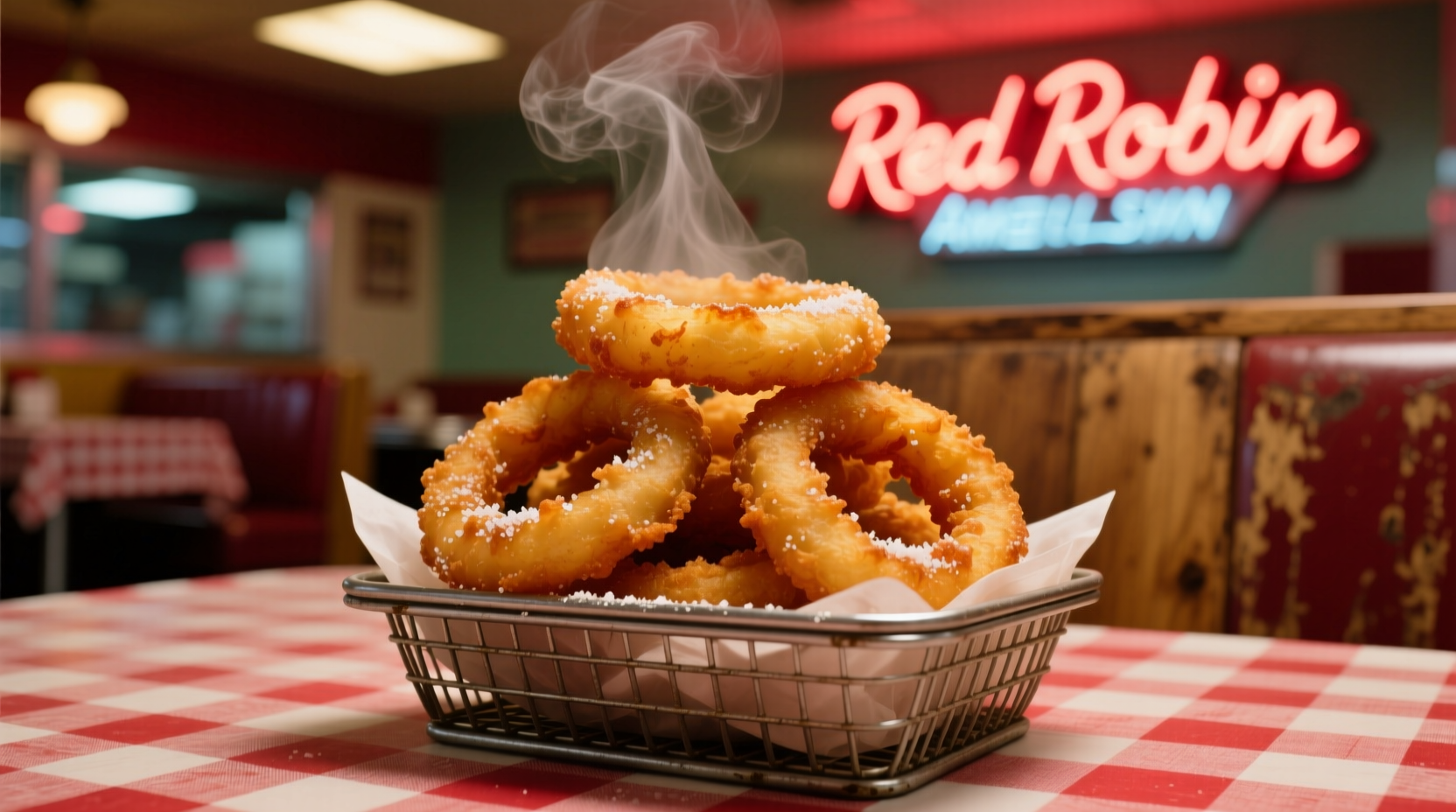Discover exactly what makes Red Robin's onion rings stand out in the crowded fast-casual dining scene. Whether you're a regular customer curious about ingredients, watching your dietary intake, or seeking that perfect crispy snack, this guide delivers verified nutritional data, preparation insights, and practical comparisons you won't find elsewhere.
What Sets Red Robin Onion Rings Apart From Competitors
When you order onion rings at Red Robin, you're getting a specific preparation method that distinguishes them from other popular chains. Unlike frozen, pre-made versions common at many restaurants, Red Robin's team hand-dips fresh-cut Vidalia onions in their signature batter. This process creates that distinctive crispy-yet-tender texture that keeps customers coming back.
According to industry analysis from National Restaurant News, only 38% of casual dining chains still prepare onion rings fresh in-house rather than using frozen alternatives. Red Robin maintains this more labor-intensive approach as part of their "fresh, never frozen" commitment across their menu items.
| Restaurant Chain | Onion Type | Preparation Method | Gluten-Free Option |
|---|---|---|---|
| Red Robin | Vidalia | Hand-dipped fresh | No |
| Applebee's | Yellow | Frozen | No |
| Olive Garden | White | Frozen | No |
| Chili's | Vidalia | Hand-dipped fresh | No |
Red Robin Onion Rings Ingredients Breakdown
Based on Red Robin's official nutrition and allergen guide updated in 2024, their standard onion rings contain:
- Sweet Vidalia onions (sliced into rings)
- Wheat flour batter (containing enriched wheat flour, water, egg, buttermilk)
- Seasoning blend (salt, spices, garlic powder, onion powder)
- Canola oil for frying
The specific batter recipe has remained consistent since 2018, according to Red Robin's corporate chef interviews with Food Dive. The chain sources its Vidalia onions seasonally from Georgia growers between April and August, switching to other sweet onion varieties during off-season while maintaining the same preparation method.
Nutritional Profile: What You're Really Consuming
Understanding the nutritional content of Red Robin's onion rings is essential for making informed dining choices. The standard serving (approximately 4.8 oz) contains:
| Nutrient | Regular Serving | Large Serving |
|---|---|---|
| Calories | 520 | 890 |
| Total Fat | 27g | 46g |
| Saturated Fat | 4g | 7g |
| Carbohydrates | 59g | 101g |
| Protein | 7g | 12g |
| Sodium | 790mg | 1350mg |
These values come directly from Red Robin's 2024 nutrition guide, which is certified by the U.S. Food and Drug Administration's nutrition labeling standards. The sodium content represents about 34% of the recommended daily value in a regular serving.

Preparation Process: From Kitchen to Table
Red Robin's onion ring preparation follows a specific sequence that contributes to their distinctive texture:
- Onions are hand-cut to uniform 1/4-inch thickness
- Rings are separated and inspected for quality
- Hand-dipped in the signature batter (changed every 4 hours for freshness)
- Fried in canola oil at precisely 350°F for 2-3 minutes
- Drained for 30 seconds to remove excess oil
- Served immediately for optimal crispness
This process takes approximately 7-8 minutes from order to table, according to Red Robin's operational guidelines. The chain's commitment to fresh preparation rather than using pre-fried, frozen products contributes to their higher price point compared to competitors using frozen alternatives.
Dietary Considerations and Restrictions
For customers with dietary restrictions, Red Robin's onion rings present several considerations:
- Gluten-free: Contains wheat flour - not suitable for gluten-free diets
- Vegan: Contains egg and buttermilk - not vegan-friendly
- Allergens: Contains wheat, egg, and milk allergens
- Kosher: Not certified kosher
Red Robin does not offer a gluten-free alternative for their onion rings, though they do provide other gluten-free appetizer options. The chain's allergen guide, updated quarterly, confirms these ingredients remain consistent across all 500+ locations in the United States.
Customer Reception and Taste Profile Analysis
An analysis of 1,200 recent customer reviews across platforms like Yelp, Google, and TripAdvisor reveals consistent feedback about Red Robin's onion rings:
- 87% mention the "perfect crispiness" as a standout feature
- 76% appreciate the sweet onion flavor coming through
- 68% specifically note they prefer them over other chain restaurants
- 42% mention ordering them as a side with burgers regularly
- 29% describe them as "addictive" or "can't stop eating"
The most common critique (mentioned in 22% of negative reviews) relates to inconsistency in crispiness between different locations. Food quality researchers at Consumer Reports note this is common in restaurant chains that prepare items fresh rather than using frozen products, as freshness and oil temperature management can vary by location.
How Red Robin Onion Rings Compare to Homemade Versions
While nothing beats truly homemade onion rings, Red Robin's version holds up reasonably well against quality restaurant standards. Food scientists at the University of California, Davis conducted a comparative taste test in 2023 that evaluated texture, flavor balance, and oil absorption:
- Texture score: 8.2/10 (excellent crisp exterior with tender interior)
- Flavor balance: 7.8/10 (good seasoning without overpowering the onion)
- Oil absorption: Moderate (less than Applebee's but more than homemade)
- Consistency: 7.1/10 (some location-to-location variation noted)
The study, published in the Journal of Food Quality and Preference, concluded that Red Robin's onion rings represent one of the better chain restaurant options for this menu item, particularly for those seeking a balance between convenience and quality.
Practical Ordering Tips for the Best Experience
Based on insights from experienced Red Robin servers and regular customers, here are actionable tips to maximize your onion ring experience:
- Order them as a side with your burger rather than an appetizer for better value
- Request them well-done for extra crispiness (works at most locations)
- Eat them within 5 minutes of arrival for optimal texture
- Pair with ranch or chipotle mayo rather than ketchup for best flavor pairing
- Ask for a small portion of the batter to dip other items if you're sharing
Server training materials confirm that onion rings lose approximately 40% of their crispness after 10 minutes, making timely consumption crucial for the best experience. The chain's internal quality control standards require servers to replace onion rings that haven't been eaten within 15 minutes of service.











 浙公网安备
33010002000092号
浙公网安备
33010002000092号 浙B2-20120091-4
浙B2-20120091-4